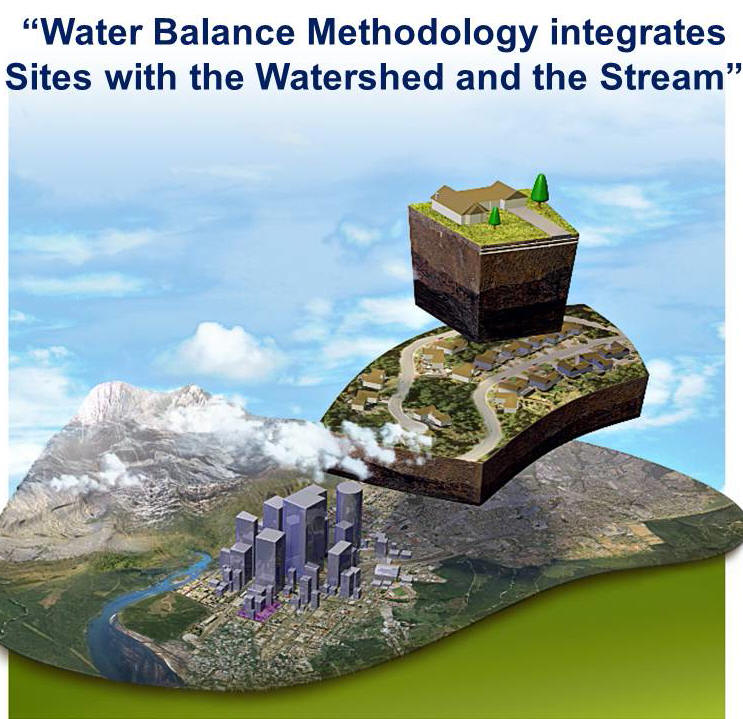British Columbia Guidance Documents Provide Educational Foundation for Rainwater Management in a Watershed Context
Companion Documents
 “Released in 2008, Living Water Smart, British Columbia’s Water Plan is a call to action to prepare communities for change and do business differently. To help the Province implement Living Water Smart, the Partnership for Water Sustainability in BC is producing guidance documents and developing tools,” reports Peter Law. Formerly with the Ministry of Environment, he is a founding DIrector of the Partnership.
“Released in 2008, Living Water Smart, British Columbia’s Water Plan is a call to action to prepare communities for change and do business differently. To help the Province implement Living Water Smart, the Partnership for Water Sustainability in BC is producing guidance documents and developing tools,” reports Peter Law. Formerly with the Ministry of Environment, he is a founding DIrector of the Partnership.
According to Peter Law, the latest series comprises a set of three Primers written for expert and non-expert audiences. The first two were released in November 2011, and the latest in April 2012:
- Primer on Rainwater Management in an Urban Watershed Context: Provides engineers and non-engineers with a common understanding of how a science-based approach to rainwater management has evolved since the mid-1990s.
- Primer on Urban Watershed Modelling to Inform Local Government Decision Processes: Provides engineers and non-engineers with guidance in three areas: setting performance targets, defining levels-of-service, and application of screening / scenario tools.
- Primer on Integrated Rainwater and Groundwater Management for Lands on Vancouver Island and Beyond: Viewing the watershed through an asset management lens provides local governments with a driver to require that development practices mimic the Water Balance.
The core concepts presented in these companion documents provide an educational foundation for rainwater management in a watershed context.
Mimic the Water Balance
The Primers address three elements of the Water Balance, namely: rainfall, groundwater and streamflow. Water Balance is short-circuited when the land surface is hardened and below-ground flowpaths to streams are eliminated, such that:
- Too Much Water: During wet weather periods, increased runoff volumes over longer durations cause stream erosion and instability.
- Too Little Water: During dry weather periods, groundwater-fed baseflows are diminished.
- Do Business Differently: Both conditions have financial implications and sustainability consequences over time.
By describing the linkages and connecting dots, the ultimate goal of the Primers is to foster responsible decisions about use and development of land in British Columbia. This approach is founded on an understanding of HOW the Water Balance Methodology integrates the site with the watershed and stream.


